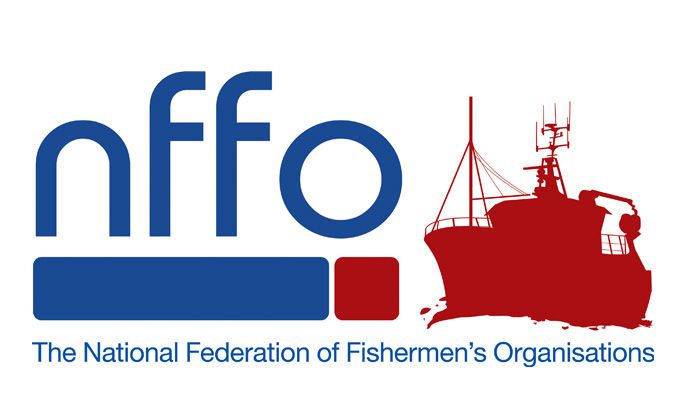28 September 2009
The NFFO is spearheading a campaign to extract the margin of tolerance issue from the new Control Regulation.
The new regulation is expected to be agreed at the next Council of Ministers on 20th October. The UK Fisheries Minister, Huw Irranca-Davies, came under intense pressure at the NFFO AGM on 17th September to take the lead in persuading member states to heading off a margin of tolerance that will criminalise thousands of fishermen across Europe.
The Problem
Our understanding is that the new Control Regulation is likely to be agreed by the Council of Ministers on 20th October.
One important unresolved issue still under discussion is the permitted margin of tolerance between logbookestimate and definitive landing declaration. The present Presidency Compromise (the 3rd) proposes that the MOT should be 8% for recovery stocks and 10% for other stocks. The UK, and perhaps some other member states, are arguing for a harmonised 10% MOT. Although there are some variations, the present rules generally apply an 8% MOT for recovery stocks and a 20% MOT for other stocks.
The fishing industries of a number of member states have repeatedly emphasised that it is not possible in the practical conditions at sea, to consistently estimate catch on board to an accuracy of 8% or 10%. This is especially true of by-catch species where the amounts of fish being estimated are relatively small.
The principle finding of the MRAG report, commissioned by Defra in 2006 into the question of margin of tolerance, was to confirm that independent experts cannot estimate catch on board to any greater degree of accuracy than the fishing crews. This difficulty arises from a range of reasons, including:
- Loss of weight during the duration of a fishing trip. Seafish have estimated, for example, that a monkfish can lose up to 15% of its weight over the course of a fishing trip. The actual level of loss is dependent on a range of factors including weather conditions and fish-room characteristics
- Ice melt: Ice melts over the course of a trip in a variable way, dependent on ambient temperatures
- Restricted fish-room space and adverse conditions at sea
- Periods of intense fishing, putting fish hold crew under pressure
- Inherent difficulty of estimating by-catch in mixed fisheries
This issue has been discussed repeatedly in all the regional advisory councils and formal advice presented to the Commission that very explicitly spells out the problem: the first principle of good regulation must be that the rule is capable of being complied with and the reality is that if a MOT of 8% or 10% is adopted there will be constant and repeated failures of vessels to comply. Irrespective of the vessel operator’s will, intention and efforts, persistent non-compliance will be inevitable.
In other words, if the Council endorses an 8%, or 10% margin of tolerance, it will be condemning large numbers of fishermen to continuous exposure to criminal prosecution for non-compliance.
It is important to appreciate that the 8% margin of tolerance was introduced prior to buyers’ and sellers’ registration, designated ports and a range of other measures that have effectively constrained over-quota landings. Whilst it has to be frankly conceded that in the past the 20% MOT was abused to mask over-quota landings because of the additional controls on fish landings, this no longer presents a significant risk.
What Can be Done?
It is critically important that the Council does not drift into adopting a margin of tolerance that will in effect criminalise large numbers of fishermen on an ongoing basis. The Commission, scarred by the highly critical Court of Auditors report has evaded its responsibility to take a balanced and measured approach to this admittedly difficult issue. The onus therefore falls on the Council of Ministers to secure a more reasonable outcome.
Against this background we:
- Urge the UK to take the lead on this issue directly with the Commission and Presidency and in alliance with other member states
- Suggest that the margin of tolerance should not be agreed as part of a package in the October Council but should be dealt with through a Council Declaration that:
- Recognises the complexity of the MOT issue
- Directs the Commission, member states and regional advisory councils to work to a finite timetable to collate evidence that would inform the adoption of realistic and achievable margins of tolerance on a fishery by fishery and regional basis
For some fisheries an 8% MOT may be achievable, in many others it most certainly is not. The approach described above would allow us to identify MOTs that are appropriate for and tailored to the characteristics of specific fisheries. In the meantime, the 8% MOT should remain in place for recovery stocks and the 20% MOT should be retained for other stocks. We think that the MFA will be able to confirm that retention of the 20% MOT will not present a significant risk.
In the meantime the NFFO will use its contacts through the RACs, Europeche, ACFA, and other fishing federations throughout Europe to galvanize support for this approach.
This issue has the capacity to undermine the collaborative approach between fishermen and fisheries managers that we hope will be at the heart of the reformed CFP. We hope that UK ministers will play a central and leading role in securing the outcome described above.

